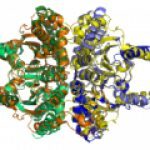Lien vers Pubmed [PMID] – 17251179
Mol. Biol. Evol. 2007 Apr;24(4):969-81
Insertion sequences (ISs) are the smallest and most frequent transposable elements in prokaryotes where they play an important evolutionary role by promoting gene inactivation and genome plasticity. Their genomic abundance varies by several orders of magnitude for reasons largely unknown and widely speculated. The current availability of hundreds of genomes renders testable many of these hypotheses, notably that IS abundance correlates positively with the frequency of horizontal gene transfer (HGT), genome size, pathogenicity, nonobligatory ecological associations, and human association. We thus reannotated ISs in 262 prokaryotic genomes and tested these hypotheses showing that when using appropriate controls, there is no empirical basis for IS family specificity, pathogenicity, or human association to influence IS abundance or density. HGT seems necessary for the presence of ISs, but cannot alone explain the absence of ISs in more than 20% of the organisms, some of which showing high rates of HGT. Gene transfer is also not a significant determinant of the abundance of IS elements in genomes, suggesting that IS abundance is controlled at the level of transposition and ensuing natural selection and not at the level of infection. Prokaryotes engaging in obligatory associations have fewer ISs when controlled for genome size, but this may be caused by some being sexually isolated. Surprisingly, genome size is the only significant predictor of IS numbers and density. Alone, it explains over 40% of the variance of IS abundance. Because we find that genome size and IS abundance correlate negatively with minimal doubling times, we conclude that selection for rapid replication cannot account for the few ISs found in small genomes. Instead, we show evidence that IS numbers are controlled by the frequency of highly deleterious insertion targets. Indeed, IS abundance increases quickly with genome size, which is the exact inverse trend found for the density of genes under strong selection such as essential genes. Hence, for ISs, the bigger the genome the better.

